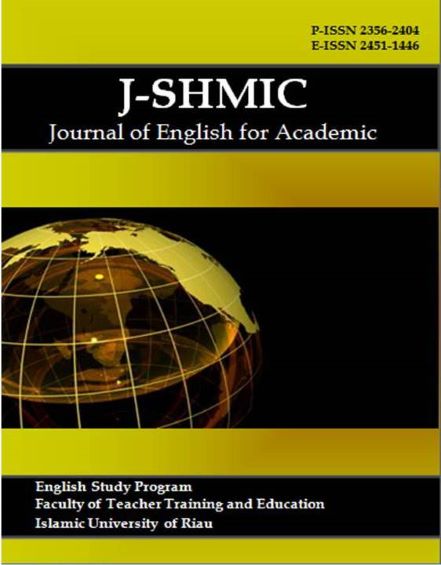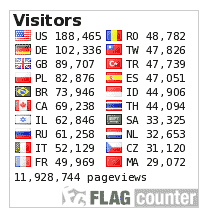Early Language Development of a Child with Expressive Language Disorder: A Parents’ Narration
Keywords:
Early language development, expressive language disorder, narrative inquiry.Abstract
Mainstream children generally experience typical stages throughout the milestones of their language development, from crying, cooing, babbling, until mature speech. Nevertheless, children with special condition usually have difficulties in getting through each phase of the development, such as those having expressive language disorder. These children usually encounter problems in communicating their needs and ideas verbally or non-verbally. This study attempts to present a story of the first five-year journey of Zaid’s language development, a child with expressive language disorder. Through interview, observation, and documentation, the study informs that Zaid was a late talker and experience difficulties in structuring well-ordered sentences.
Downloads
References
Bashir, A. S., & Scavuzzo, A. (1992). Children with language disorders: Natural history and academic success. Journal of learning disabilities, 25(1), 53-65.
Bloom, L. M. (1968). Language development: Form and function in emerging grammars. Dissertation: Columbia University.
Braun, V., & Clarke, V. (2006). Using thematic analysis in psychology. Qualitative research in psychology, 3(2), 77-101.
Chapman. R. (1981). Exploring Children’s Communicative Intentions. In J. Miller (Ed), Assesing language production in children: Experimental procedures. Baltimore, MD: University Park Press.
Connelly, F. M., & Clandinin, D. J. (2006). Narrative inquiry. Handbook of complementary methods in education research, 3, 477-487.
Dardjowidjojo. (2006). Psikolinguistik: Pengantar Pemahaman Bahasa Manusia. Jakarta: Yayasan Pustaka Obor Indonesia.
Esin, C. (2011). Narrative analysis approaches. Qualitative research methods in psychology. Combining core approaches, 92-117.
Fensen, L., Dale, P., Reznick, J., Thal, D., Bates, E., Hartung, J., Pethick, S., & Reilly, J. (1993). MacArthur Communicative Development Inventories. San Diego: Singular Publishing Group
Garvey, C. (1984). Children's talk. Cambridge: Harvard University Press.
Gleason, J. B. (1985). The Development of Language. Ohio: Merill Publishing.
Hawa, V. V., & Spanoudis, G. (2014). Toddlers with delayed expressive language: An overview of the characteristics, risk factors and language outcomes. Research in developmental disabilities, 35(2), 400-407.
Irwin, J. R., Carter, A. S., & Briggs-Gowan, M. J. (2002). The social-emotional development of “late-talking” toddlers. Journal of the American Academy of Child & Adolescent Psychiatry, 41(11), 1324-1332.
Krakovich, T. M., McGrew, J. H., Yu, Y., & Ruble, L. A. (2016). Stress in parents of children with autism spectrum disorder: An exploration of demands and resources. Journal of autism and developmental disorders, 46(6), 2042-2053.
Labov, W. (1997). Some further steps in narrative analysis. Journal of narrative and life history, 7, 395-415.
Leonard, C. M., & Eckert, M. A. (2008). Asymmetry and dyslexia. Developmental neuropsychology, 33(6), 663-681.
O’Grady, W. (2006, July). The problem of verbal inflection in second language acquisition. In Proceedings of the Conference of the Pan-Pacific Association of Applied Linguistics (pp. 169-190).
Paul, R. (1991). Profiles of toddlers with slow expressive language development.Topics in Language Disorders 11.4.1-13.
Paul, R., & Shiffer, M. E. (1991). Communicative initiations in normal and late-talking toddlers. Applied Psycholinguistics, 12(4), 419-431.
Paul, R. (1996). Clinical implications of the natural history of slow expressive language development. American Journal of Speech-Language Pathology, 5(2), 5-21.
Paul, R., Hernandez, R., Taylor, L., & Johnson, K. (1996). Narrative development in late talkers: Early school age. Journal of Speech, Language, and Hearing Research, 39(6), 1295-1303.
Paul, R., Murray, C., Clancy, K., & Andrews, D. (1997). Reading and metaphonological outcomes in late talkers. Journal of Speech, Language, and Hearing Research, 40(5), 1037-1047.
Rescorla, L. (1989). The Language Development Survey: A screening tool for delayed language in toddlers. Journal of Speech and Hearing disorders, 54(4), 587-599.
Richardson, U., Kulju, P., Nieminen, L., & Torvelainen, P. (2009). Early signs of dyslexia from the speech and language processing of children. International journal of speech-language pathology, 11(5), 366-380.
Rivard, M., Terroux, A., Parent-Boursier, C., & Mercier, C. (2014). Determinants of stress in parents of children with autism spectrum disorders. Journal of autism and developmental disorders, 44(7), 1609-1620.
Spooner, L. (2002). Addressing expressive language disorder in children who also have severe receptive language disorder: A psycholinguistic approach. Child Language Teaching and Therapy, 18(3), 289-313.
Published
How to Cite
Issue
Section
This is an open-access article distributed under the terms of the Creative Commons Attribution-ShareAlike 4.0 International License which permits unrestricted use, distribution, and reproduction in any medium. Users are allowed to read, download, copy, distribute, search, or link to full-text articles in this journal without asking by giving appropriate credit, providing a link to the license, and indicating if changes were made. All of the remixes, transform, or build upon the material must distribute the contributions under the same license as the original.











